News
Building a 1968 Vespa 150 from scratch
The Honda Dio I was using as a beater bike clocked 1000kms during this restoration.
BHPian funkykar recently shared this with other enthusiasts.
How I learnt about Vespa 150
In the last few years, several Scooters, mostly Bajaj, have made up an integral part of my life. A lot of my friends (especially Arun1100 & GreenDay) kept asking me why I don't have any Vespa. I mostly assumed they were referring to LML Scooters which are also generally referred to as Vespa. In these years, I learned the lineage of Bajaj scooters to be of Vespa, of course mostly on Team-bhp. Then I realized the old Vespa 150, the Bajaj 150, and the Priya were more or less the same shapes except for very subtle differences. As they were 3 geared, it did not interest me. But slowly, the curves on the Vespa 150 kept attracting me and slowly created enormous interest.
I then started to look for a Vespa 150. They were priced quite high. Very well restored ones cost anywhere between 60-100k with clean ownership and updated papers. I also started thinking of getting an unrestored one and restore it to originality. I couldn't find any reasonable ones. I then asked my Scooter mechanic Sunil, who is also a good friend now. He said he has one but in a dismantled state. He wasn't willing to sell it. He said he dismantled it so he will be able to keep it in his attic. He did this in the late 90s. His idea was to restore it some time and use it for himself. It was of his customer who gave it for a rebuild and never returned until a few years later. The work also never started. He held the Scooter and waited for him to come back. After a few years, the owner comes back and says he had a bad accident and wouldn't want to ride any geared Scooter and was riding a Kinetic Honda. He apologized for the inconvenience and handed the papers and told that the mechanic Sunil can keep/sell and recover for the trouble caused. The scooter was in an Ok condition. But it would likely fetch a pittance he thought and retained it. He was using an old Bajaj 150 at that time and for him, the 3 geared 150cc was already nostalgia. Also, the Vespa and Bajaj 150 were the first of the Scooters he learned to repair. His elder brother was a mechanic at an Authorised service center and often would bring home engine assembly kind of work and teach his brothers. So these guys learnt engine work first, then the rest of the mechanicals at a later time. This nostalgia made him keep the Vespa in a dismantled state. Over the years, he once started to restore and postponed it due to monetary concerns. He never found time later to restore it nor have the heart to scrap it.
Some history of Vespa
Vespa, as most know, has its origins in Italy. It was a brand of scooter manufactured by Piaggio. The name meant a wasp in Italian. In the 1960s and '70s, it was the most sought-after Scooter in India. It was best known for its agility and excellent quality. Most people referred to them as 'Italian Vespa'. Once Bajaj started making Scooters, over the decades, the brand name Vespa faded away. A compilation of some of their old TV commercials.
2020 - The Pandemic
Then came 2020, the Covid-19 Pandemic. After the National lockdown, when cases started increasing crazily in Wave 1, my mechanic Sunil was very very worried. His family was in Kerala and the lockdown had separated them (as interstate travel was not easy and trains weren't fully operating) for few months. He was quite depressed. So much that he was considering closing down his shop and go settle in Kerala. He hails from Kerala but lived entirely in Bangalore. That has been his idea anyway for a later time in life. He looked certain he has preponed it. I was very distraught. How will my 10s of Scooters survive without him.
Sunil agreed, but I dictate the terms
One fine day around July 2020, I asked him again what he will do with the dismantled Scooter. He said he doesn't know. A couple of days later, he called me and said I could have it. Deep within I was elated, but with great control over emotion, I told him 'Ok, will think about it. Will speak to you tomorrow'. I visited him the next day. He did confirm that he was willing to sell it. He needs a couple of days to remove it. I told him I will be ready to buy only if he is ready to restore it. Without restoring, he can't leave for Kerala. I will pay a sizeable chunk of money only in the end. He wasn't too sure as he was already a bit depressed and said he will think about it. After a lot of reluctance, he agreed. After 3 days, he had managed to get the chassis and panels from the attic.
Here is how it looked like
The very first look:
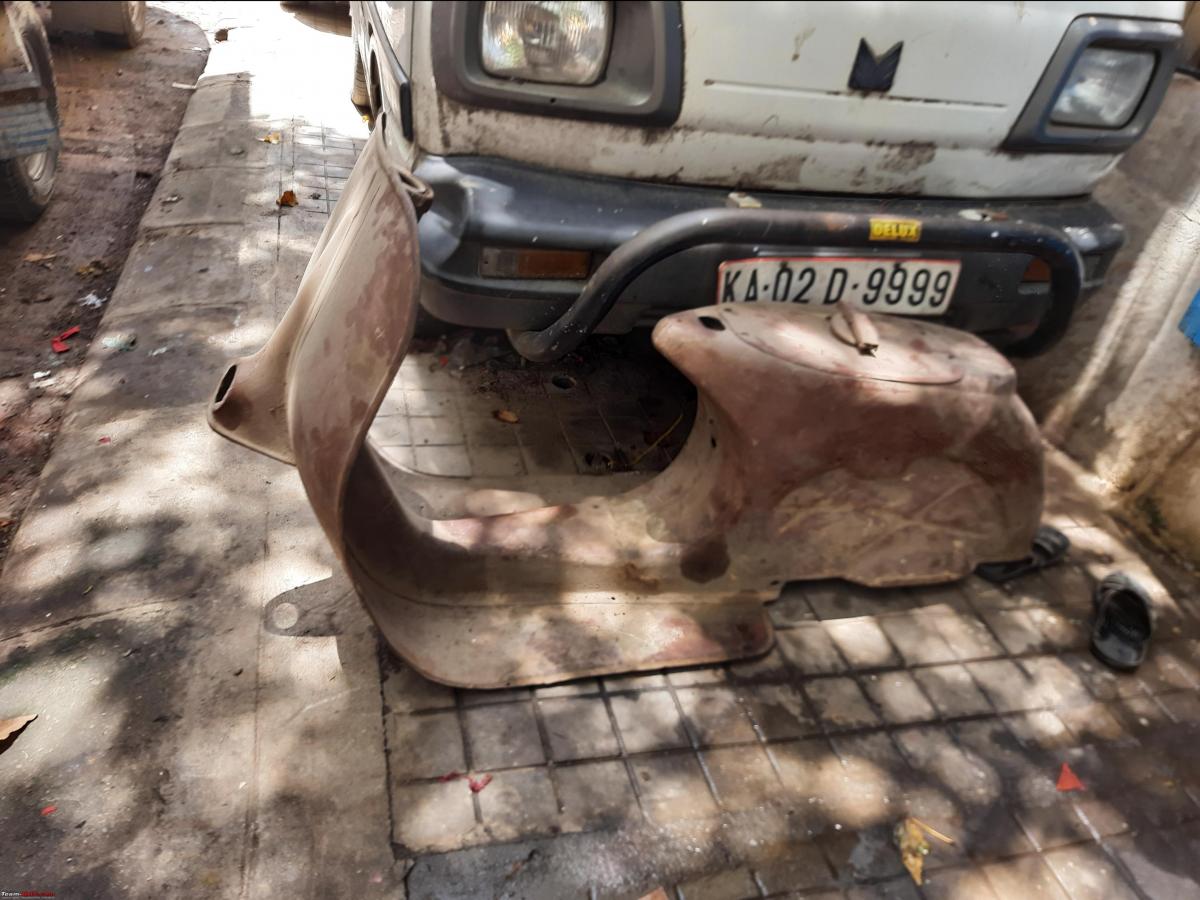
The chassis:



Panel and mud guard:

The panels:
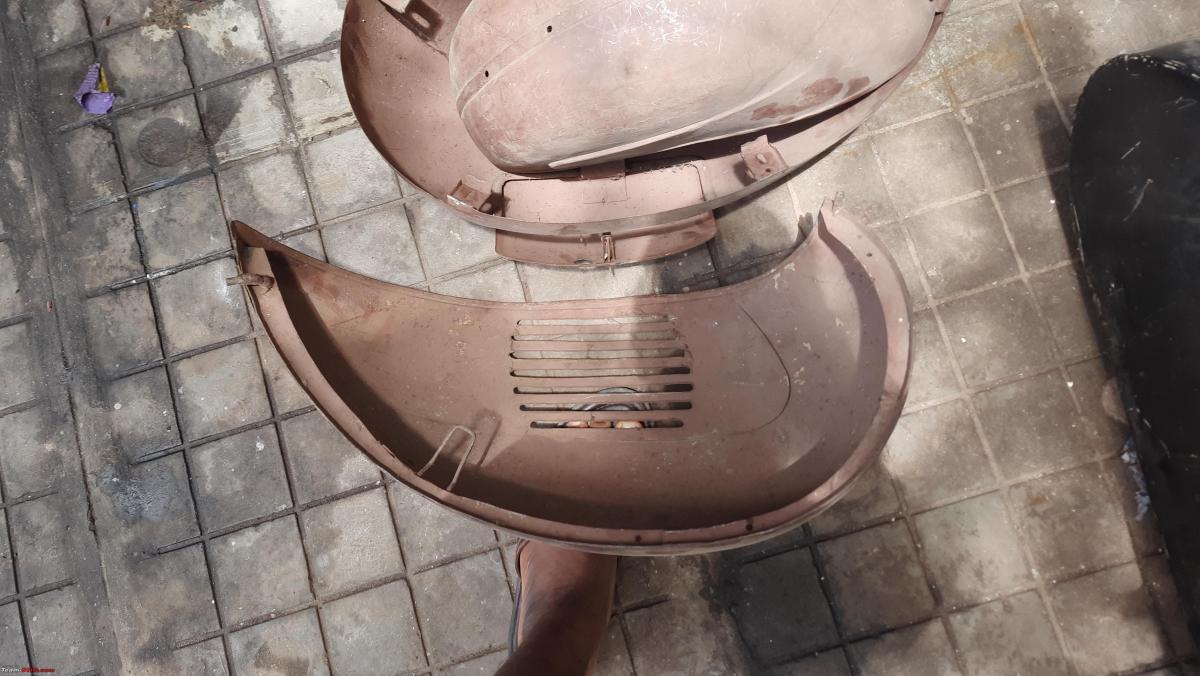
The side panel:
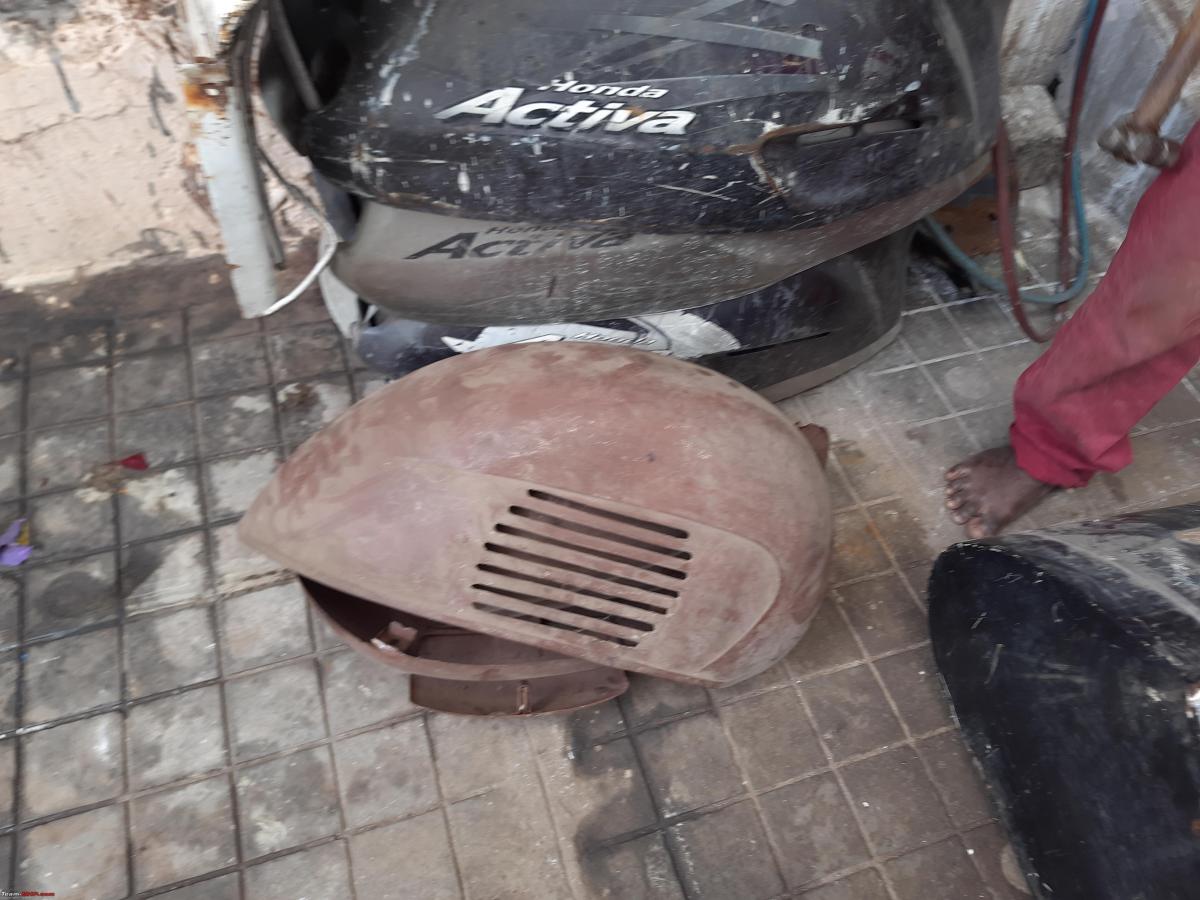
Chassis where the tank sits, looked good:

After seeing the chassis in the above condition, all the interest I had fizzled. I told Sunil that this wasn't good and I am not interested. He laughed at me and said it's not like how it appears. Why don't you check with the tinker once? After he persuaded me, I did visit the tinker and made him check. I told him beforehand I want an honest opinion on how the chassis is. I would want him to tinker it back if I chose to purchase.
The tinker checks to certify
The tinker inspecting:

Good news from the tinker
Tinker, after checking thoroughly, said it's in very good condition. 2-3 days of tinkering at max needed. This re-ignited the interest and it was game-on! IT'S NOW TIME TO CONVERT THE PILE OF RUST INTO A SCOOTER! The tinker asked the chassis and all panels to be coated with red oxide which makes it easy to work on. I took it to the painter nearby and he said he has to scrape off the surface rust then apply red oxide. All set for the process.
Ready for scraping and red oxide:
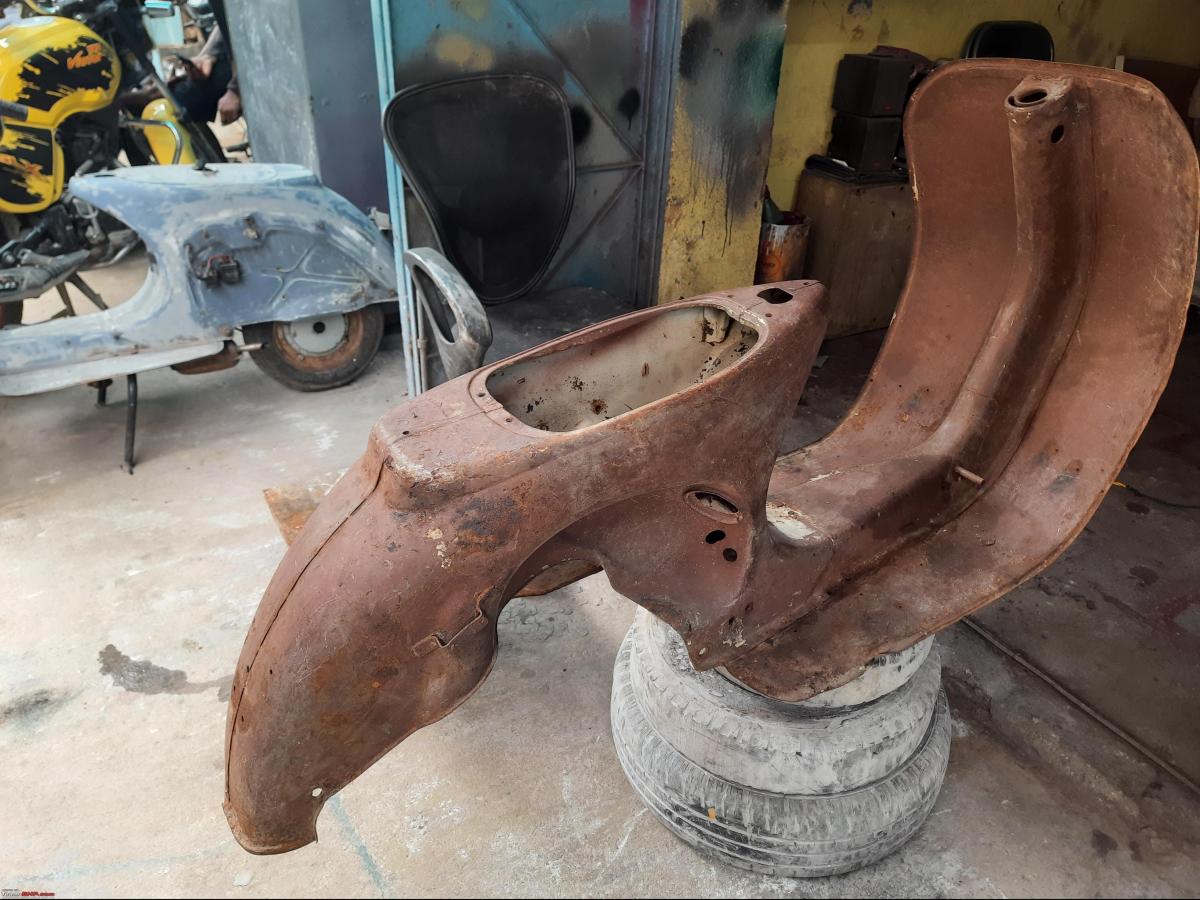
All ready:
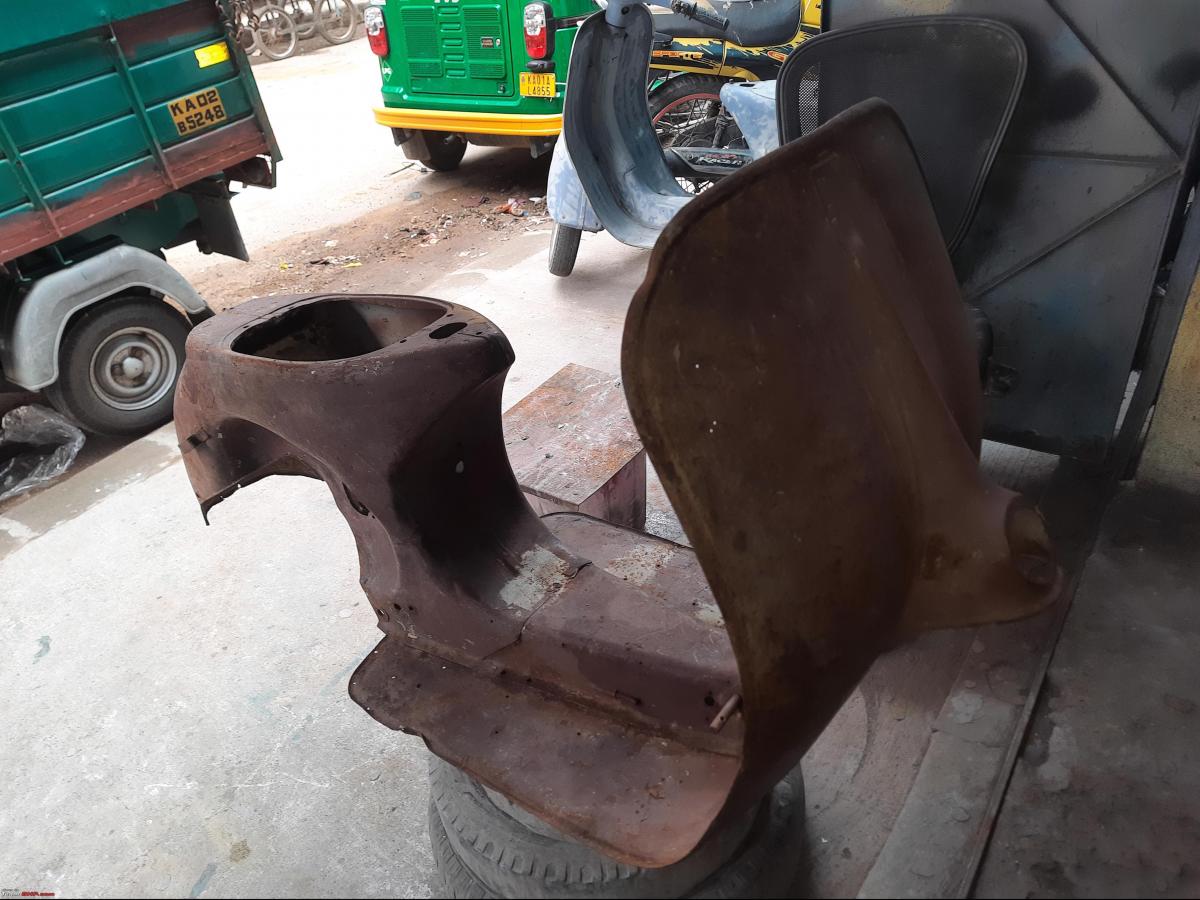


After the chassis was supposedly scraped:


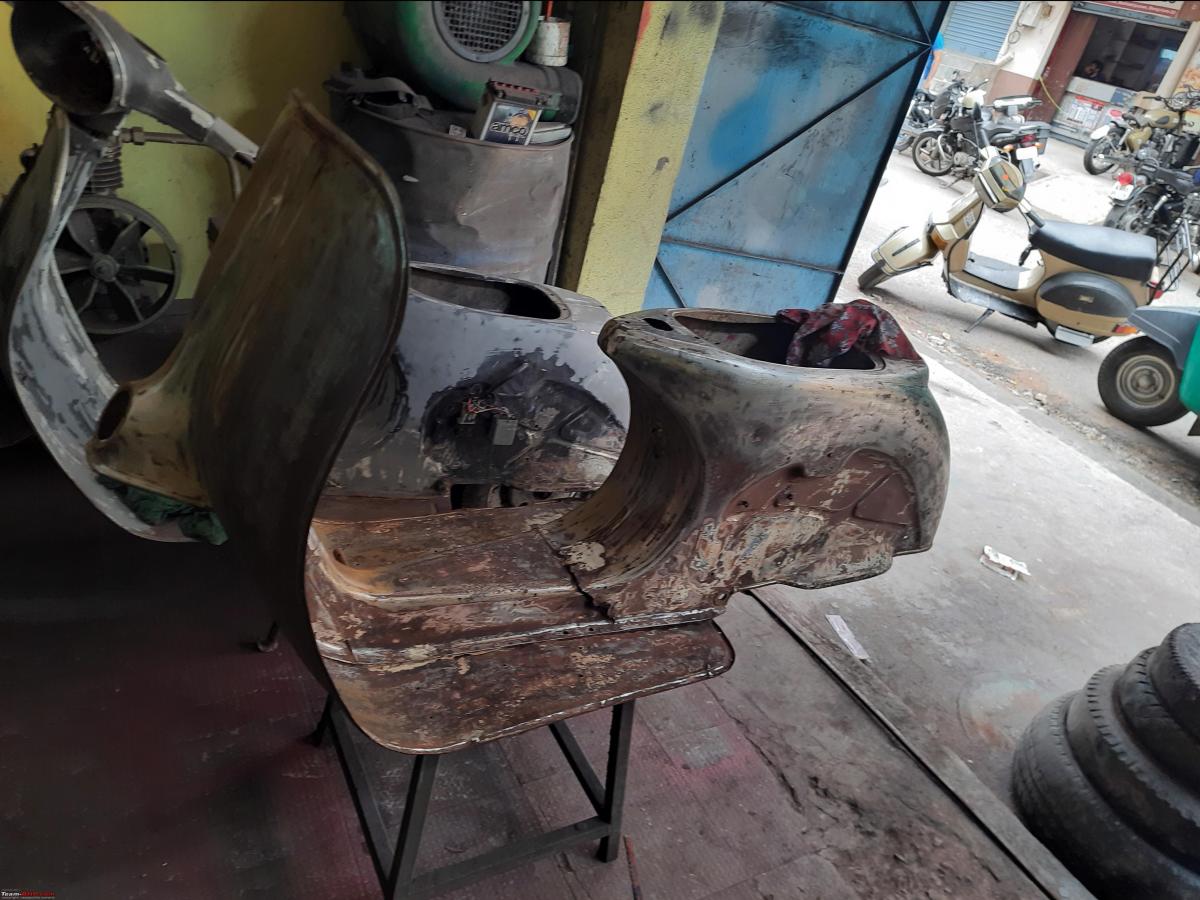
The scraped chassis.
Continue reading the restoration process and BHPian comments for more insights and information.



















